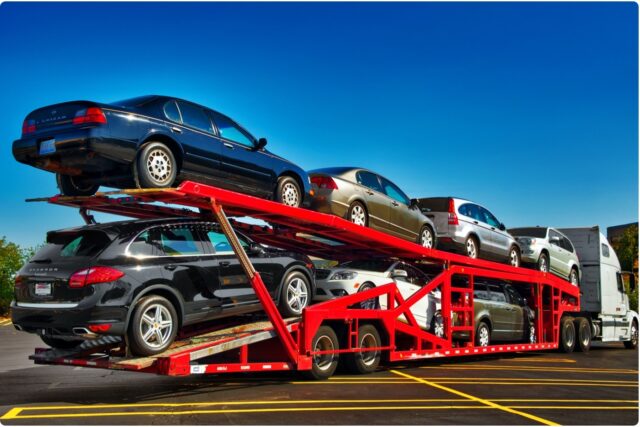
Car shipping services have become increasingly indispensable in our globally connected world, where people frequently relocate for work, purchase vehicles from distant locations, or need to transport vehicles for exhibitions and sales.
While the convenience of having a car transported professionally is undeniable, the cost associated with these services can vary widely. Understanding the factors that influence the final price of car shipping services is crucial for anyone looking to transport a vehicle.
Amazingly enough, in this article, we’ll dive into the various elements that shape the cost of car shipping, ranging from logistical considerations like distance and route to the type of vehicle being transported, and the market dynamics at play.
By exploring these factors, readers will gain a deeper insight into the pricing structures of car shipping services and learn strategies to secure more affordable options. Our goal is to give you the knowledge needed to make informed decisions when choosing a car shipping service that aligns with your needs and budget.
So, here’s what you need to know:
1. Distance and Route

The primary factor affecting the cost of car shipping services is the distance between the pickup and delivery points. Longer distances invariably incur higher costs due to the increased fuel consumption, wear and tear on transport vehicles, and the time invested by the shipping crew.
However, the relationship between distance and cost is not always linear. For instance, shipping a car across country lines or over oceans involves additional complexities, such as customs clearance and international logistics, which can disproportionately increase the cost.
Moreover, the specific route also matters. Popular routes between major cities often offer more competitive pricing due to higher demand and regular traffic, allowing carriers to operate more efficiently. In contrast, remote or less-traveled routes may attract a premium due to the added complexity and lower demand.
Carriers might have to deviate significantly from their standard routes to deliver vehicles to or pick them up from secluded areas, adding to the cost.
2. Type and Condition of the Vehicle
The characteristics of the vehicle being shipped significantly influence the price. Larger vehicles, like SUVs and trucks, take up more space on a carrier and weigh more, leading to higher costs. Additionally, modified vehicles, which may have altered dimensions or special handling requirements, can also attract a premium.
The condition of the vehicle plays a crucial role too. Operational vehicles that can be driven onto and off the transport truck are typically cheaper to ship than non-operational ones, which may require additional equipment and labor for loading and unloading.
3. Type of Transport

The choice between open and enclosed transport significantly impacts the cost. With open transport, your precious vehicle will be shipped in an open trailer for an amazing and affordable price. It’s widely used for standard vehicle shipping needs.
In contrast, enclosed transport offers more protection against weather elements and road debris but comes at a higher price point. It’s often reserved for luxury, antique, or high-value vehicles.
4. Speed and Timing of Delivery
The urgency of the shipping can also affect the price. Expedited shipping services are available at a premium for those who need their vehicle transported quickly. Conversely, customers with flexible timelines may be able to secure lower rates by accommodating the carrier’s schedule.
Seasonal fluctuations also play a role in pricing. For instance, the demand for car shipping services typically increases in the summer and around the start of the academic year, leading to higher prices. Winter, with its challenging weather conditions, can also see increased rates, especially for routes that pass through areas with heavy snowfall.
So, if you want to land the best cheap auto transport deal out there, make sure to take into account the seasons because it can make a world of difference for your wallet.
5. Insurance and Additional Services

We also want you to know that insurance coverage is another critical factor. While basic insurance is usually included in the shipping cost, additional coverage may be necessary for expensive vehicles. This extra protection adds to the overall cost but provides peace of mind.
Additional services, such as door-to-door delivery as opposed to terminal-to-terminal, can also increase the price. Door-to-door service offers the convenience of having the vehicle picked up and delivered as close to the specified locations as possible, but it requires more logistical effort from the carrier, thus incurring additional costs.
6. Market Conditions and Fuel Prices
The car shipping industry is not immune to broader economic factors. Fluctuations in fuel prices directly impact transportation costs. Higher fuel prices mean higher shipping costs. Similarly, market conditions also have a great impact on the pricing structure, as the demand for car shipping services fluctuates in response to seasonal and economic factors.
During peak moving seasons, like the summer months when families often relocate, the demand for vehicle transport spikes. This surge in demand places upward pressure on prices as shipping companies strive to meet the heightened needs of consumers. Conversely, off-peak periods may witness a decrease in demand, leading to more competitive pricing.

Fuel prices also affect a substantial proportion of the overall cost structure for car shipping. The transportation industry relies heavily on fuel-powered vehicles, and any shifts in fuel prices directly affect operating expenses. When fuel prices experience an uptick, shipping companies often find it necessary to adjust their rates to offset the increased operational costs. Conversely, when fuel prices drop, some carriers may pass on the savings to consumers in the form of more competitive shipping rates.
The interconnected relationship between market conditions and fuel prices underscores the volatility of the car shipping industry. Businesses operating in this space must navigate these fluctuations strategically to maintain competitiveness and financial sustainability. Additionally, for consumers seeking car shipping services, understanding the ebb and flow of market conditions and fuel prices can empower them to make informed decisions.
Planning shipments during off-peak seasons or periods of lower fuel prices may offer cost savings, while awareness of market trends allows for better negotiation and selection of shipping options that align with budgetary considerations. In essence, market conditions and fuel prices shape the contours of car shipping pricing, creating a dynamic landscape that necessitates adaptability and foresight from both service providers and consumers.









